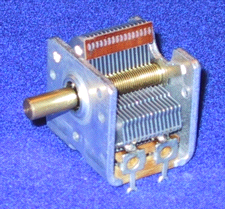
- the basic idea of capacitance
- how to calculate it in simple cases.
- how capacitors store energy
- how capacitors work in circuits
 | By the end of this you should understand the following
|
FInal application of static electricity is Capacitors
Parallel Plate system: There is another way of writing the eqn. for the parallel plates:
|
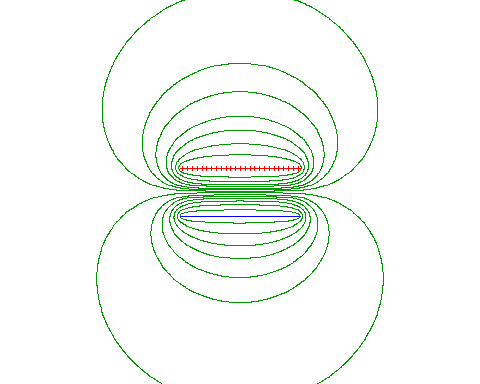 |
C = A = ε₀A 4πkd d
V = -kQ
RC = Q = r
V k
What is the capacity of the earth? (R = 6500 km), assuming it is a conducting sphere.
| Capacitance ~ volume of a bucket to hold the water | 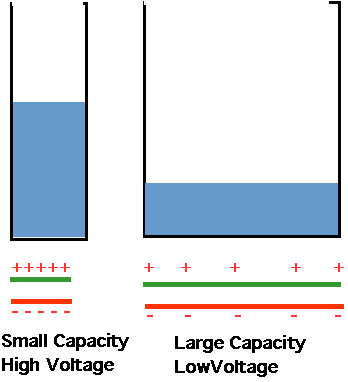 |
Usually a solid material is put between the plates of a capacitor: this has the effect of reducing the field for a given charge (the dipoles get rotated).
Dielectric constant
K = Eapplied
Eeff
This
C = KA = Kε₀A 4πkd de.g. for air, K ~ 1.0006, for glass K ~ 10, for water K ~78.
| An application of this: the proximity detector. By measuring the capacitance, (via the voltage) can decide if a dielectric object has entered. | 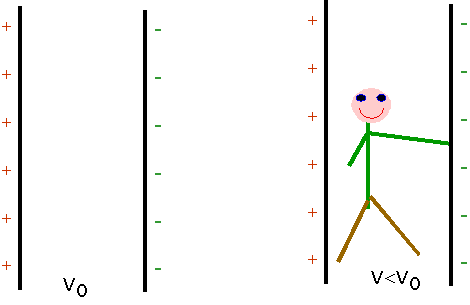 |
| Can even do this by regarding object as one plate of capacitor | 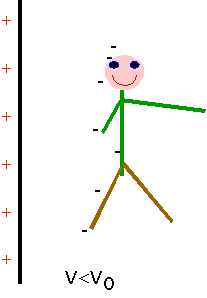 |
Work done in adding charge dQ is V dQ, but V = Q/C, so U = ½CV² |
 |
(Same calculation as we did for P.E. stored in stretched spring).
U = ½CV² and C = ε₀A and V = Ed
d
u = U/Volume = ½ε₀E² = ½E²/4πkNote that this holds in general for any electric field
| An example of energy storage in capacitors. This uses a 27 mF capacitor charged to 4 kV: how much energy does this correspond to? |
| We frequently need to combine capacitors with other electrical components: the symbol is obvious! |
| SImplest possible is just a capacitor and battery (in paractice always have an resistance). Can assume that battery just applies constant voltage. | 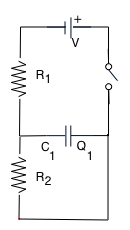 |
Practical circuits often combine different elements, such as resistors, capacitors and inductances (and "active" elements like transistors etc). Hence we need to know how to combine them. e.g.
In parallel: we want to replace 2 capacitors by a single equivalent one: in this case that must have the same voltage across each one, so
Q₁ = V C₁, Q₂ =V C₂, Q = VC but Q₁ + Q₂ = Qso that C = C₁ + C₂ this is almost obvious, if we think of C₁ and C₂ as being part of a larger cap. C. |
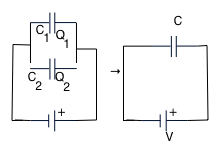 |
In series: in this case the central part is isolated and neutral, so charges must be +Q and -Q as shown. Hence
V = V₁ + V₂ = Q = Q + Q
C C₁ C₂
so that
1 = 1 + 1 C C₁ C₂ |
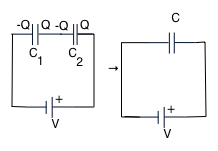 |
Useful to remember that this is the opposite of the corresponding relations for resistors.
| e.g suppose C₁ = 1 μf,C₂ = 2 μf, C₃ = 12 μf, what is the equivalent capacitance of the circuit? | 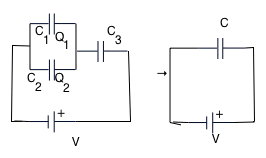 |
This sets up electrostatics: we now want to go on and look at current electricity